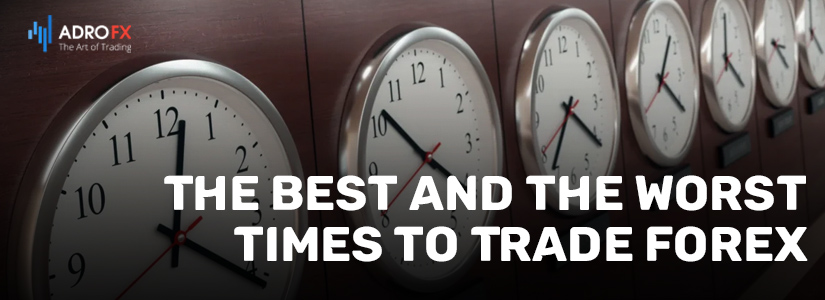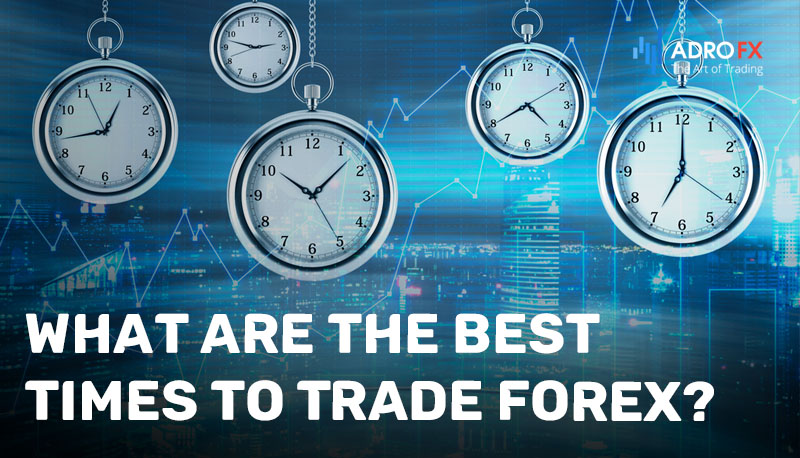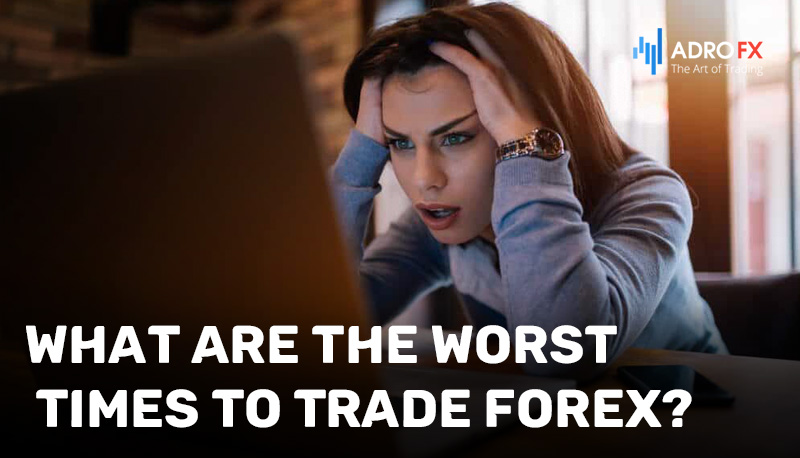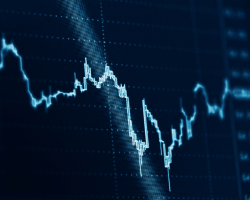The Best and the Worst Times to Trade Forex

In the world of financial markets, timing can be everything. The question of when to buy or sell is a perennial one, eternally perched on the minds of traders and investors. It's a query that carries profound implications for both seasoned professionals and those just embarking on their trading journey.
This article delves into the intricate world of market timing, exploring both the best and worst times to trade forex. As we unravel the complexities of timing in the forex market, we'll shed light on market sessions, volatility, economic events, and the challenges of achieving perfect timing. Whether you're a novice trader looking to enhance your understanding or an experienced one seeking to refine your timing strategies, this comprehensive guide is designed to equip you with the knowledge needed to make informed decisions in the dynamic realm of forex trading. So, let's embark on this journey through time and markets, where precision can mean the difference between success and setbacks.
What Are the Forex Market Hours of Operation?
The forex market, also known as the foreign exchange market, boasts a remarkable feature - it never sleeps. This financial juggernaut operates 24 hours a day, five days a week, rendering it one of the most liquid and accessible financial markets across the globe. Within this perpetual cycle, forex market hours are delineated by distinct sessions in various regions:
- Sydney Session:
The market awakens in Sydney, Australia, commencing at 5:00 PM EST (Eastern Standard Time) and gracefully retires at 2:00 AM EST. While this session exudes a sense of tranquility compared to its counterparts, it sets the stage for the forex market's ceaseless journey. - Tokyo Session:
As the sun rises in Tokyo, Japan, the forex action comes alive at 7:00 PM EST, subsiding at 4:00 AM EST. This session pulses with heightened activity, particularly when it intertwines with the London session, forming a profoundly liquid period. - London Session:
The City of London, a financial powerhouse, ushers in the London session at 3:00 AM EST, culminating at 12:00 PM EST. This window stands as one of the most vibrant and pivotal sessions. Notably, the overlap with the Tokyo session from 3:00 AM to 4:00 AM EST offers a surge of liquidity. - New York Session:
Across the Atlantic, the New York session takes the reins, commencing at 8:00 AM EST and bowing out at 5:00 PM EST. This session mirrors London in liquidity and influence, and the 8:00 AM to 12:00 PM EST period, where it converges with London, forms a cornerstone for trading. - Weekend Break:
Even in the relentless world of forex trading, there's a moment of reprieve. As Friday dusk settles at 5:00 PM EST, the forex market temporarily slumbers, awakening once again at 5:00 PM EST on Sunday. However, it's noteworthy that some brokers may offer limited trading during this weekend interlude, primarily for specific currency pairs.
This ceaseless operation of the forex market is a testament to the global nature of currency trading, as different financial hubs around the world take the baton at varying times. This continuous rhythm ensures that traders can swiftly respond to news and events unfurling in diverse time zones.
It's imperative to bear in mind that during major holidays in particular regions, trading activity may ebb significantly, giving rise to lower liquidity and potentially wider spreads. Hence, traders must remain vigilant about these holiday intervals and adapt their trading strategies judiciously to navigate these distinct market dynamics. 
What Are the Best Times to Trade Forex?
The best times to trade forex can vary depending on your trading strategy, style, and the currency pairs you're interested in. Generally, the most active and potentially profitable times to trade are during the overlaps of major forex trading sessions. Here are some key considerations:
Overlap of London and New York Sessions (8:00 AM to 12:00 PM EST)
- This is often considered the best time to trade forex due to the high trading volume and liquidity.
- Major currency pairs like EUR/USD, GBP/USD, and USD/JPY tend to have tighter spreads during this overlap, making it ideal for day trading and short-term strategies.
- Economic news releases from both Europe and the United States frequently occur during this time, leading to significant price movements.
London Session (3:00 AM to 12:00 PM EST)
- The London session is the most active and typically offers good trading opportunities.
- It's an excellent time for trading major European currency pairs like EUR/USD and GBP/USD.
- The first few hours of the London session (3:00 AM to 5:00 AM EST) can be particularly volatile as it overlaps with the end of the Asian session.
Asian Session (7:00 PM to 2:00 AM EST)
- While the Asian session is generally less volatile than the London and New York sessions, it can still offer trading opportunities.
- This session is more suitable for traders who prefer a quieter market or want to trade Asian currency pairs like USD/JPY or AUD/USD.
Apart from that, you should consider the following aspects:
- The opening and closing hours of each major trading session (Sydney, Tokyo, London, and New York) can be times of increased volatility and price action.
- Pay attention to market openings, as they can set the tone for the trading day.
- Try to avoid trading during the transition times when one major session is winding down, and another is about to begin. These periods, such as the last few hours of the New York session and the first few hours of the Asian session, can have lower liquidity and wider spreads.
- Your trading strategy and goals should also influence the best times for you to trade. For example, day traders may prefer the overlap of the London and New York sessions, while swing traders may focus on longer time frames and be less concerned about specific trading hours.
- Be aware of economic events and news releases that can impact the forex market. Major economic announcements can cause significant price fluctuations, so it's often best to avoid trading just before and after such events.
Remember that individual preferences and trading styles vary, so what works best for one trader may not be ideal for another. It's essential to develop a trading plan that aligns with your goals and risk tolerance and to practice risk management techniques to protect your capital. Additionally, always stay informed about current market conditions and adjust your trading schedule accordingly.

What Are the Worst Times to Trade Forex?
Trading forex can be highly profitable, but there are also times when it's generally considered less favorable due to reduced liquidity, increased spreads, and potentially erratic price movements. Here are some of the worst times to trade forex:
Weekend Gaps
Trading right at the market open on Sunday (around 5:00 PM EST) can be risky because of the possibility of weekend gaps. Significant news events or developments over the weekend can lead to large price gaps when the market reopens, potentially causing unexpected losses.
Late Friday Afternoons
- Trading on late Friday afternoons (from 3:00 PM EST onwards) can be challenging because liquidity tends to decline as traders prepare to close their positions for the weekend.
- Market conditions can become less predictable, and spreads may widen, making it harder to execute trades at favorable prices.
Major Holidays and Bank Holidays
- During major holidays in key financial centers, trading activity can diminish significantly. This can lead to extremely low liquidity, wider spreads, and reduced trading opportunities.
- Be especially cautious during bank holidays in the United States and Europe, as these can significantly impact trading conditions.
Overlapping Sessions with Low Liquidity
- Be cautious during the overlap of major sessions with low liquidity. For example, the overlap of the New York and Asian sessions (around 5:00 PM to 7:00 PM EST) can have lower liquidity and wider spreads.
- Trading during these times can be riskier, as it may take longer to execute trades at desired prices.
Economic News Releases
- While economic news releases can present trading opportunities, they can also be high-risk times. Sudden and significant price movements can occur during and immediately after important economic announcements.
- Some traders prefer to avoid trading around major news events and wait for the market to stabilize.
Thin Market Hours
- Thin market hours typically occur during the late evening or early morning hours in the time zone of the currency pair you're trading.
- During these hours, there are fewer market participants, which can lead to lower liquidity and wider spreads, making it harder to find favorable trading conditions.
Market Opening and Closing Times
- While market openings and closings can offer trading opportunities, they can also be volatile periods with erratic price movements. Traders should exercise caution during these times.
Low-Volume Currency Pairs
- Currency pairs with low trading volumes may have less liquidity and wider spreads, making it more challenging to execute trades efficiently.
- Avoid trading obscure or exotic currency pairs during times of low liquidity.
It's important to remember that while these times may be less favorable for trading, they don't necessarily mean you should refrain from trading altogether. Traders with specific strategies and risk management plans may still find opportunities during these periods. However, it's crucial to be aware of the potential risks and adapt your trading approach accordingly. Additionally, always stay informed about current market conditions and economic events that can impact the forex market.
Why Is Timing the Forex Market a Challenging Endeavor?
Successful forex trading hinges on precise timing, yet mastering this skill is far from straightforward. If you've dabbled in traditional stock markets, you're likely acquainted with the futility of attempting to synchronize your trades with recessions or discounted buying opportunities. The reason is simple: while market fluctuations and corrections are inevitable, pinpointing their exact occurrence remains an elusive task.
A well-crafted trading strategy can provide some insight into the timing of these trades, but it's essential to acknowledge that no strategy is infallible. Numerous variables exert influence over price movements and their timing. While some factors, such as government economic reports and reliable chart patterns, may be relatively trackable and tradable, others, such as unforeseen economic or business news developments or abrupt shifts in trader sentiment, can prove challenging or even impossible to foresee.
As a trader, your optimal approach to timing involves constructing a comprehensive trading strategy that accounts for as many variables as possible. This strategy should assist you in identifying opportunities where you can reasonably anticipate the timing of price movements, all while recognizing that, over the long term, achieving perfect timing on every occasion is an impractical aspiration.
Final Thoughts
In conclusion, the quest for the best and worst times to trade in the forex market is a crucial consideration for traders of all levels. The intricacies of market timing are undeniable, and the impact on trading outcomes cannot be overstated. While there are optimal windows of opportunity, there are also moments to exercise caution. Ultimately, successful forex trading demands a deep understanding of timing dynamics, a well-crafted strategy that accounts for various variables, and the acknowledgment that perfect timing is a challenging, if not impossible, feat. In this dynamic world of finance, being prepared and adaptable is key to navigating the ever-changing tides of the forex market.
About AdroFx
Established in 2018, AdroFx is known for its high technology and its ability to deliver high-quality brokerage services in more than 200 countries around the world. AdroFx makes every effort to keep its customers satisfied and to meet all the trading needs of any trader. With the five types of trading accounts, we have all it takes to fit any traders` needs and styles. The company provides access to 115+ trading instruments, including currencies, metals, stocks, and cryptocurrencies, which make it possible to make the most out of trading on the financial markets. Considering all the above, AdroFx is the perfect variant for anyone who doesn't settle for less than the best.










